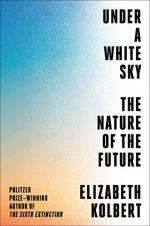
|
| Name: _________________________ | Period: ___________________ |
This test consists of 15 multiple choice questions and 5 short answer questions.
Multiple Choice Questions
1. How are rodents often currently killed?
(a) Through hunting.
(b) Euthanasia.
(c) Traps.
(d) Poison.
2. What is the mouse called that would make it so only male mice survived?
(a) A Y-Yield Mouse.
(b) An X-Shredder mouse.
(c) A Y-Power Mouse.
(d) An X-Factor Mouse.
3. Kolbert says that, without help, most of the carbon dioxide humans emit would turn to stone eventually, called what?
(a) Chemical solidification.
(b) Chemical aging.
(c) Natural stoning.
(d) Chemical weathering.
4. To what has gene-drive technology been compared?
(a) Tim Burton’s Beetlejuice.
(b) Kurt Vonnegut’s ice-nine.
(c) Steven King’s It.
(d) Stanley Kubrick’s A Clockwork Orange.
5. What is NOT a reason given for why taking carbon dioxide out of a gas stream is difficult?
(a) It is expensive.
(b) It is a challenging and dangerous technique.
(c) It must be done on a massive scale.
(d) Disposal of large amounts of carbon dioxide underground would be tricky.
6. Who does Tizard bring on to help with the details of toad experiments?
(a) Caitlin Cooper.
(b) Elizabeth Kolbert.
(c) Ruth Gates.
(d) Carey McCamey.
7. What is Brodifacoum?
(a) An anticoagulant used to kill mice.
(b) A powerful cleaning and disinfecting product.
(c) An antibiotic used to heal sick animals.
(d) A trap used to catch cane toads.
8. Who is Paul Thomas?
(a) An employee at Odin.
(b) A CRISPR expert.
(c) A mouse research expert.
(d) A toad research expert.
9. For how long might you be blind if cane toad poison gets in your eyes?
(a) A few hours.
(b) Permanently.
(c) A few days.
(d) A few week.
10. How many trees would have to be planted to remove a significant amount of carbon dioxide?
(a) 900,000 thousand.
(b) A trillion.
(c) A billion.
(d) A million.
11. Are gene drives always beneficial for the species?
(a) No, not necessarily.
(b) Half and half.
(c) No, never.
(d) Yes, always.
12. What combination does Kolbert mention that could make cane toads non-lethal and coral heat-resistant?
(a) CRISPR used in conjunction with the power of outlaw genes.
(b) CRISPR used in conjunction with the power of rogue genes.
(c) CRISPR used in conjunction with the power of dominant genes.
(d) CRISPR used in conjunction with the power of outliar genes.
13. What mammals were first experimented on with CRISPR and the gene drive?
(a) Toads.
(b) Mice.
(c) Rats.
(d) Birds.
14. In Up in the Air: Chapter 1, Kolbert decides to support what type of service?
(a) One that scrubs carbon emissions from the air.
(b) One that runs greenhouses on carbon dioxide emissions.
(c) One that sends SAILs into the stratosphere.
(d) One that sends diamonds into the stratosphere.
15. In Into the Wild: Chapter 3, why does Kolbert begin with an explanation of the Norse god, Odin?
(a) To show how dangerous it is to play God.
(b) To show the similarities between gods and humans.
(c) To compare him to the genetic-engineering company, Odin.
(d) To compare him to the powers of nature.
Short Answer Questions
1. What is the removal of carbon dioxide from the atmosphere called?
2. Who is Edda Aradóttir?
3. According to Kolbert, why are mice perfect lab animals?
4. Which Dr. Suess book does Kolbert compare biological interventions?
5. Where did the house mouse originate?
|
This section contains 559 words (approx. 2 pages at 300 words per page) |

|




